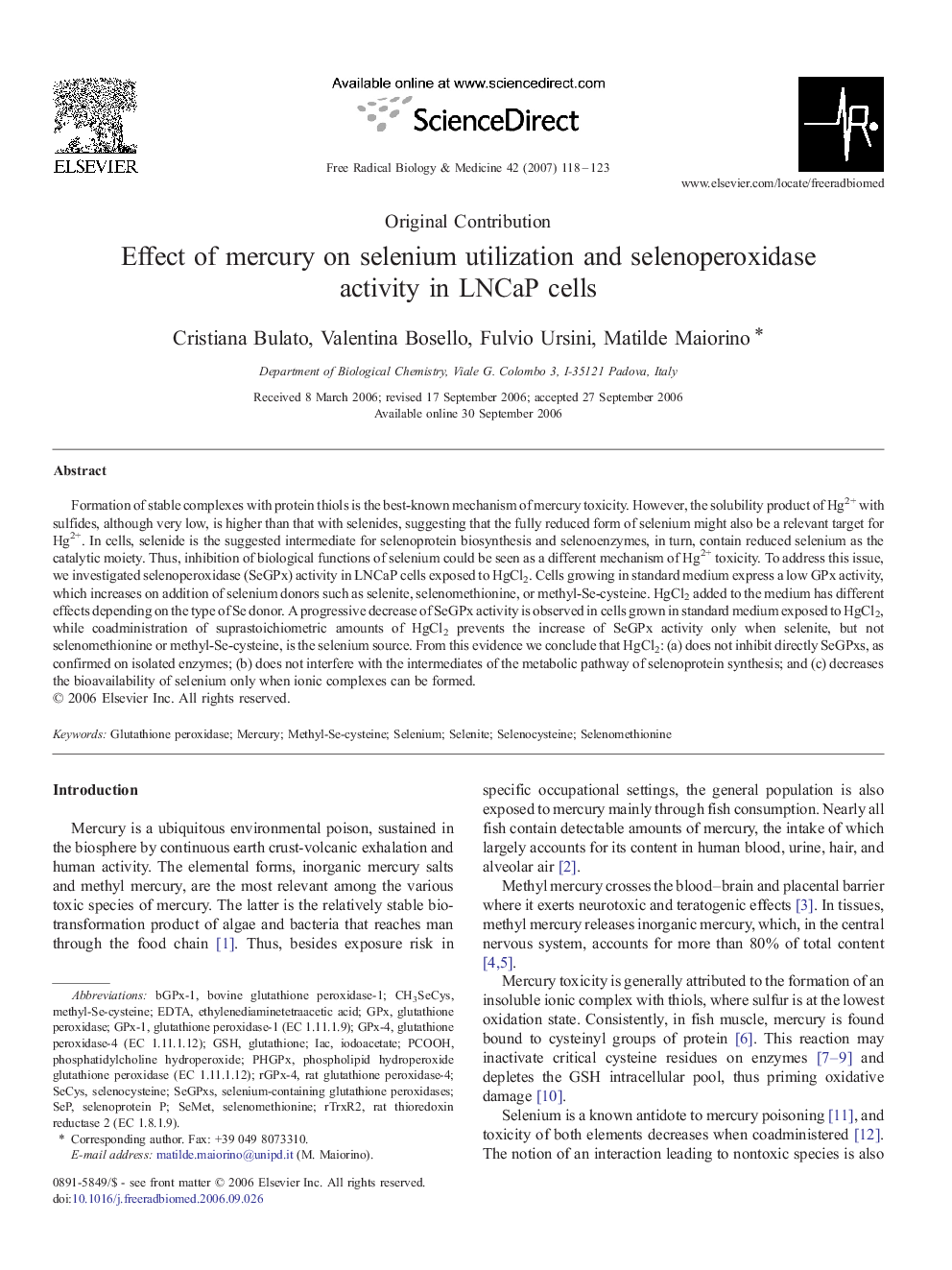| Article ID | Journal | Published Year | Pages | File Type |
|---|---|---|---|---|
| 1910924 | Free Radical Biology and Medicine | 2007 | 6 Pages |
Abstract
Formation of stable complexes with protein thiols is the best-known mechanism of mercury toxicity. However, the solubility product of Hg2+ with sulfides, although very low, is higher than that with selenides, suggesting that the fully reduced form of selenium might also be a relevant target for Hg2+. In cells, selenide is the suggested intermediate for selenoprotein biosynthesis and selenoenzymes, in turn, contain reduced selenium as the catalytic moiety. Thus, inhibition of biological functions of selenium could be seen as a different mechanism of Hg2+ toxicity. To address this issue, we investigated selenoperoxidase (SeGPx) activity in LNCaP cells exposed to HgCl2. Cells growing in standard medium express a low GPx activity, which increases on addition of selenium donors such as selenite, selenomethionine, or methyl-Se-cysteine. HgCl2 added to the medium has different effects depending on the type of Se donor. A progressive decrease of SeGPx activity is observed in cells grown in standard medium exposed to HgCl2, while coadministration of suprastoichiometric amounts of HgCl2 prevents the increase of SeGPx activity only when selenite, but not selenomethionine or methyl-Se-cysteine, is the selenium source. From this evidence we conclude that HgCl2: (a) does not inhibit directly SeGPxs, as confirmed on isolated enzymes; (b) does not interfere with the intermediates of the metabolic pathway of selenoprotein synthesis; and (c) decreases the bioavailability of selenium only when ionic complexes can be formed.
Keywords
Related Topics
Life Sciences
Biochemistry, Genetics and Molecular Biology
Ageing
Authors
Cristiana Bulato, Valentina Bosello, Fulvio Ursini, Matilde Maiorino,
